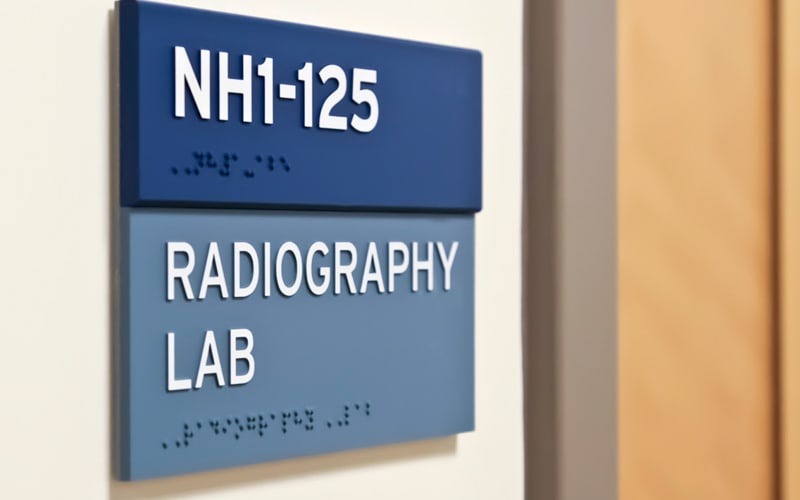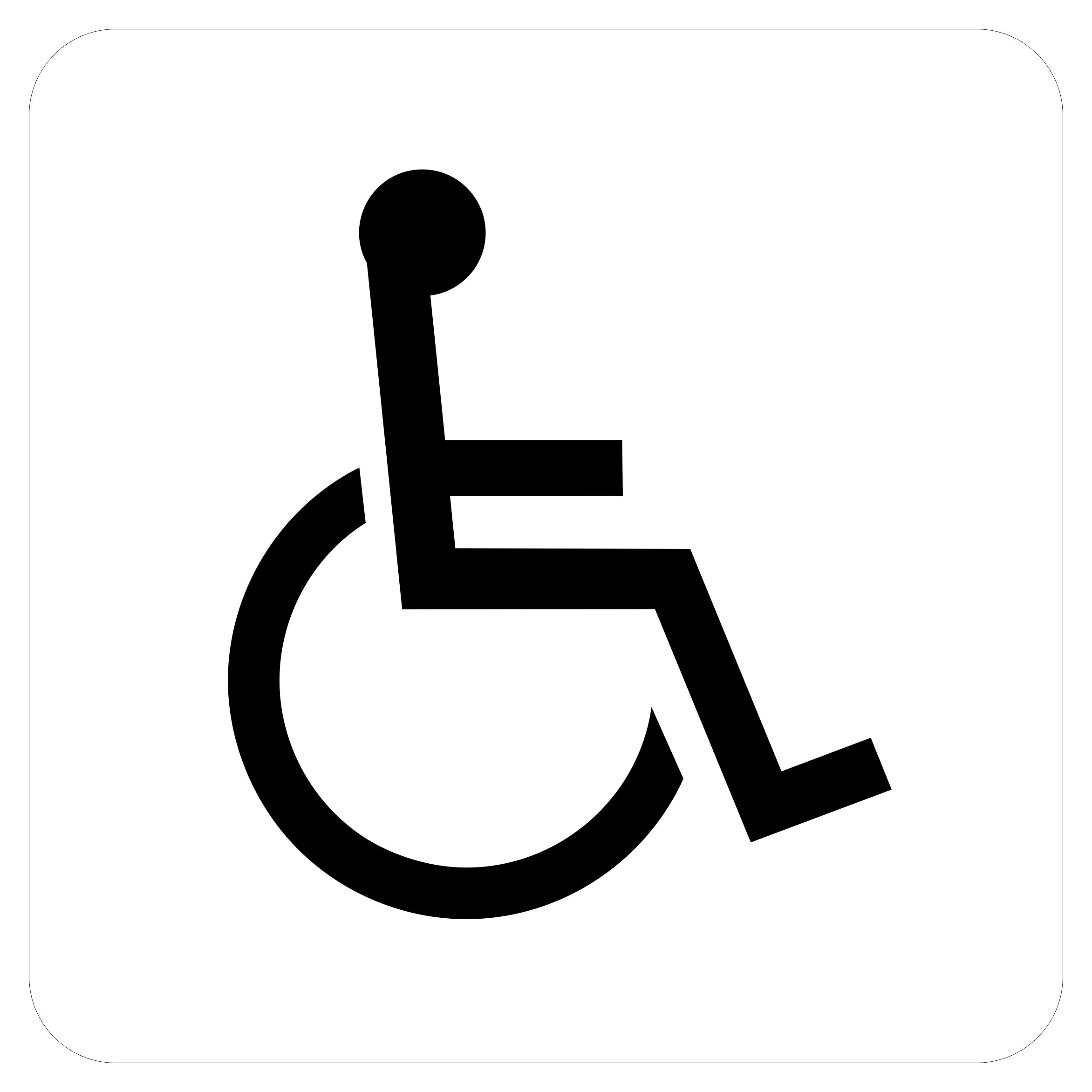Checking Out the Secret Functions of ADA Indications for Improved Ease Of Access
In the world of accessibility, ADA indications serve as silent yet effective allies, guaranteeing that rooms are inclusive and navigable for people with impairments. By incorporating Braille and tactile aspects, these indicators break obstacles for the aesthetically impaired, while high-contrast color systems and clear font styles provide to diverse visual requirements.
Importance of ADA Compliance
Making certain compliance with the Americans with Disabilities Act (ADA) is critical for promoting inclusivity and equivalent access in public areas and offices. The ADA, established in 1990, mandates that all public facilities, employers, and transport solutions accommodate individuals with handicaps, ensuring they take pleasure in the very same rights and possibilities as others. Conformity with ADA standards not only satisfies lawful commitments but likewise improves a company's credibility by showing its dedication to diversity and inclusivity.
One of the vital facets of ADA conformity is the application of available signage. ADA indicators are made to make sure that individuals with disabilities can conveniently browse through buildings and rooms.
In addition, sticking to ADA policies can minimize the danger of legal effects and prospective fines. Organizations that fail to abide with ADA guidelines might deal with charges or lawsuits, which can be both monetarily difficult and damaging to their public picture. Hence, ADA compliance is indispensable to promoting an equitable environment for everybody.
Braille and Tactile Elements
The consolidation of Braille and responsive components into ADA signage embodies the concepts of accessibility and inclusivity. It is usually positioned under the corresponding text on signage to ensure that individuals can access the info without aesthetic assistance.
Tactile elements prolong past Braille and consist of increased personalities and icons. These parts are made to be noticeable by touch, permitting people to recognize area numbers, toilets, leaves, and various other important areas. The ADA sets specific guidelines regarding the size, spacing, and placement of these responsive aspects to enhance readability and make certain consistency throughout various atmospheres.

High-Contrast Color Systems
High-contrast color schemes play a crucial function in enhancing the presence and readability of ADA signage for people with visual impairments. These systems are vital as they maximize the distinction in light reflectance between message and background, ensuring that indications are easily noticeable, even from a range. The Americans with Disabilities Act (ADA) mandates making use of details shade contrasts to accommodate those with minimal vision, making it an important aspect of conformity.
The efficacy of high-contrast shades depends on their capability to stand out in numerous lighting problems, consisting of dimly lit settings and areas with glow. Generally, dark message on a light history or light text on a dark history is utilized to accomplish optimal comparison. Black message on a yellow or white background supplies a raw aesthetic difference that helps in fast acknowledgment and comprehension.

Legible Fonts and Text Dimension
When considering the style of ADA signs, the choice of readable typefaces and suitable message dimension can not be overstated. These aspects are crucial for guaranteeing that indications come to individuals with visual disabilities. The Americans with Disabilities Act (ADA) mandates that typefaces must be sans-serif and not italic, oblique, script, extremely attractive, or of uncommon type. These demands assist guarantee that the text is quickly understandable from a distance and that the characters are appreciable to varied target markets.
The size of the message also official statement plays a crucial function in availability. According to ADA guidelines, the minimum message height should be 5/8 inch, and it needs to boost proportionally with checking out distance. This is specifically crucial in public areas where signage requirements to be reviewed swiftly and properly. Consistency in message size adds to a natural visual experience, aiding individuals in navigating settings effectively.
Moreover, spacing between lines and letters is essential to readability. Sufficient spacing prevents characters from showing up crowded, enhancing readability. By sticking to these standards, designers can significantly enhance accessibility, making sure that signs serves its designated objective for all individuals, no matter of their aesthetic abilities.
Reliable Placement Methods
Strategic placement of ADA signage is important for making best use of access and making certain conformity with lawful requirements. ADA guidelines stipulate that signs need to be placed at an elevation in between 48 to 60 inches from the ground to ensure they are within the line of sight for both standing and seated individuals.
In addition, indicators need to be put nearby to the latch side of doors to permit very easy identification before access. This positioning assists individuals locate areas and areas without obstruction. In cases where there is no door, indicators need to be located on the closest surrounding wall surface. Consistency in sign positioning throughout a facility enhances predictability, reducing complication and improving general individual experience.

Conclusion
ADA indicators play a vital function in advertising accessibility by integrating attributes that address the requirements of people with handicaps. Incorporating Braille and tactile components ensures important details is available to the aesthetically damaged, while high-contrast color schemes and readable sans-serif typefaces boost visibility across different illumination problems. Reliable placement techniques, such as ideal installing elevations and critical locations, further help with navigation. These components jointly cultivate an inclusive atmosphere, underscoring the relevance of ADA compliance in ensuring equal gain access to for all.
In the realm of accessibility, ADA indicators offer as silent yet powerful allies, ensuring that rooms are inclusive and accessible for people with impairments. The ADA, enacted in 1990, mandates that all public centers, companies, and transportation services suit individuals with disabilities, guaranteeing they take pleasure in the exact same rights and possibilities as others. ADA Signs. ADA indications are developed to ensure that people with impairments can easily browse through spaces and structures. ADA guidelines specify that indications should be placed at a height in between 48 to 60 inches from the ground to ensure they are within the line of view over at this website for both standing and seated individuals.ADA indicators play a crucial role in advertising ease of access by incorporating functions more information that deal with the demands of people with disabilities
Comments on “ADA Signs: Necessary Tools for Inclusive Settings”